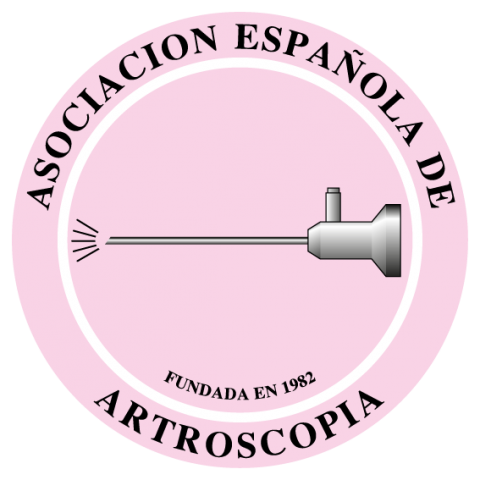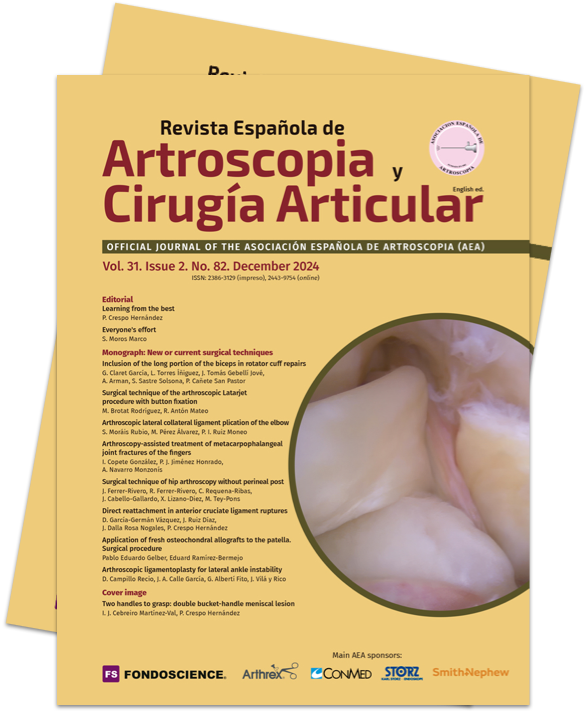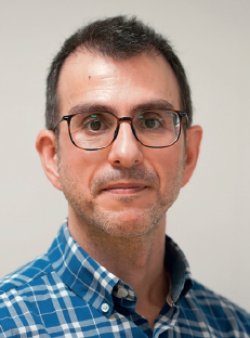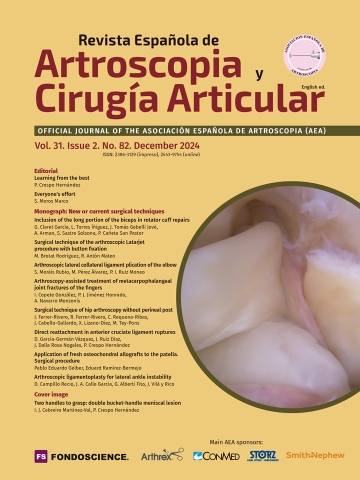Dear friends,
It gives me great pleasure to present a new monographic issue of REACA, our magazine.
As you know, for years the Revista Española de Artroscopia y Cirugía Articular has regularly published issues which, like this one, focus on a specific topic. Recent examples include the treatment of irreparable cuff tears, the management of chondral lesions of the knee, or ankle arthroscopy.
The present issue in particular stands out because, unlike previous issues, it contains works from all the areas that make up our speciality. In this way, each reader will find at least one publication of interest to him or her, both in arthroscopy of the upper limb (shoulder, elbow and hand) and of the lower limb (hip, knee and ankle).
If you are wondering what these joints might share in common, the answer is simple: arthroscopic techniques! In this monograph, a select group of traumatologists - all opinion leaders in their respective disciplines - will let us peek over their shoulders as they explain how they approach different and particularly innovative surgical techniques.
Some will allow us to examine recently developed surgeries for the first time (such as arthroscopic ligamentoplasty for ankle instability(1)); others will share with us their tricks for the most complex procedures (such as arthroscopic Latarjet(2)); and still others will give us their particular version of surgeries which, although not new, are still being refined today (such anterior cruciate ligament rupture repair(3)).
When I think back to my period as a resident, and especially to my first years as a staff physician, I often do so with the uncomfortable feeling that - to be honest - I didn't quite know what I was doing. It was not clear to me whether the decisions I was making with my patients, mostly inherited from my elders, were the right ones. At that time I did not understand why some patients with hallux valgus recovered beautifully while, despite doing the same, others were only "average" (and in this I am being generous). What was going on?
Maybe that colleague who told me feet are like that, and that it is better not to operate on any of them, was right. Or possibly the feet that looked the same to me were not so much the same, and the problem was in the indication. Or maybe my surgical technique was not as good as I thought. The fact is that I asked myself what I could do to improve my results and get more happy patients (and more bottles of wine in my practice).
I started studying, watching videos and observing other surgeons, and this taught me how to explore, how to interpret imaging tests and how to operate better. Naturally, my indications and results also improved. At that time, the editor of this journal decided, fortunately, to abandon knee arthroscopy and dedicate himself to shoulder surgery, which allowed me to take his place and leave the world of bunions (forever grateful, Miguel). Learning in knee surgery was much quicker, both because of my previous experience and, above all, because I joined the Spanish Arthroscopy Association (AEA).
The annual congresses, the training courses, the national arthroscopy training plan with its expert title and, of course, the journal you are reading now, were and still are cornerstones in my professional development, for which I am deeply grateful to the AEA.
As invited editor of this issue of REACA, I encourage you to enjoy its contents at least as much as we on the Editorial Board have enjoyed preparing them. Its director, reviewers and editors have put the maximum interest, affection and enthusiasm into its preparation, not to mention the authors, who have generously and selflessly shared their time and knowledge with all of us.
I sincerely hope that you find it as useful to read as I myself have always found it. May you feel the peace of mind of reading that the expert you admire is doing the same as you in the operating room; the joy of discovering a new way of approaching that step which you always find difficult; and the excitement of learning something new for the first time.
Never stop studying, nothing is more rewarding.
Pablo Crespo Hernández
Lower Limb Section
Department of Traumatology and Orthopaedic Surgery
Hospital Universitario Ramón y Cajal, Madrid (Spain)
Invited editor






